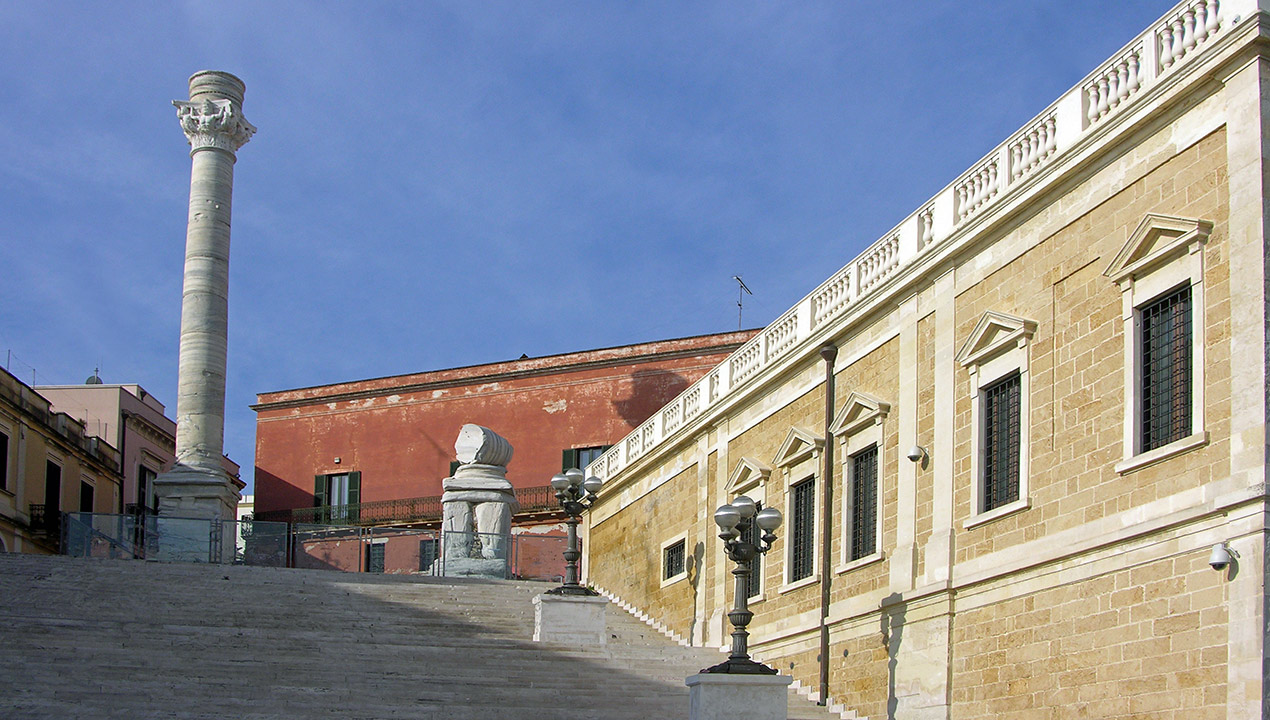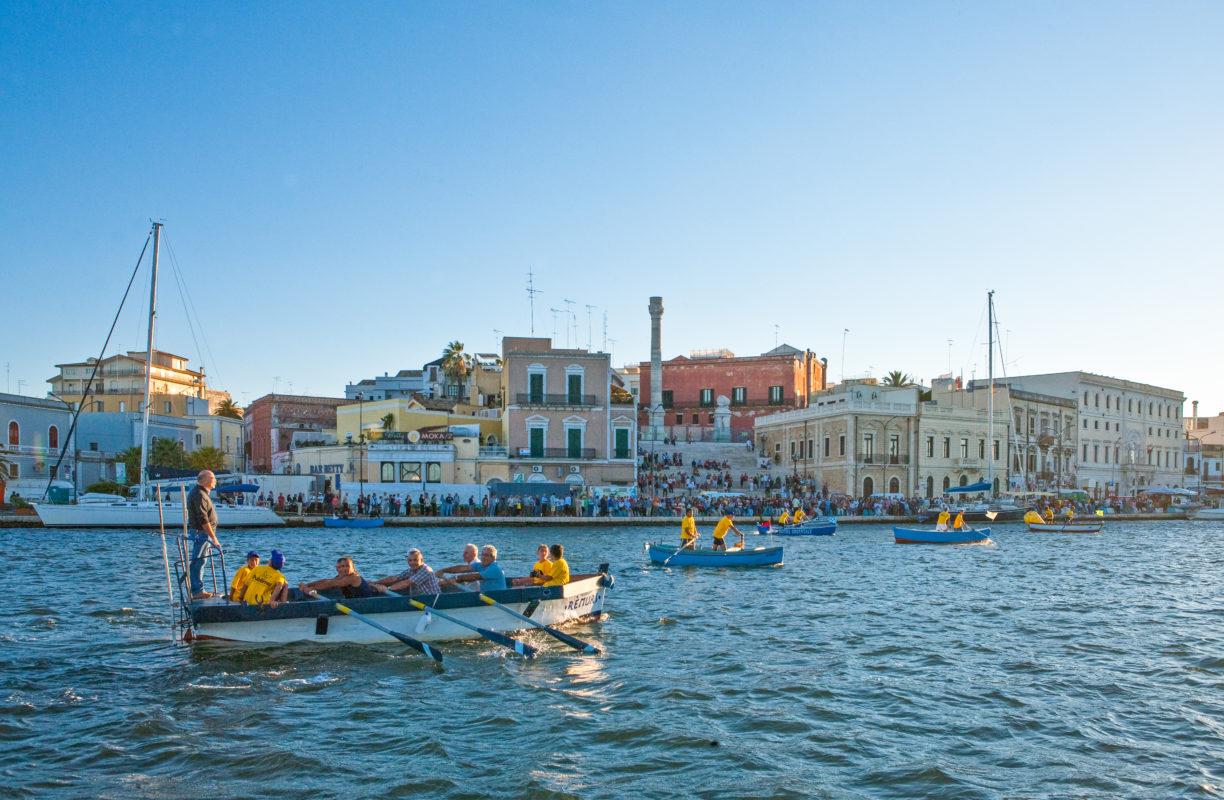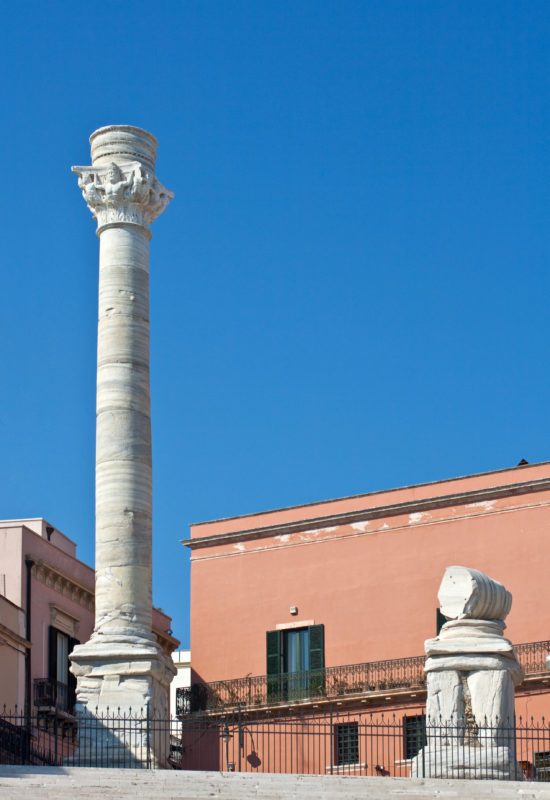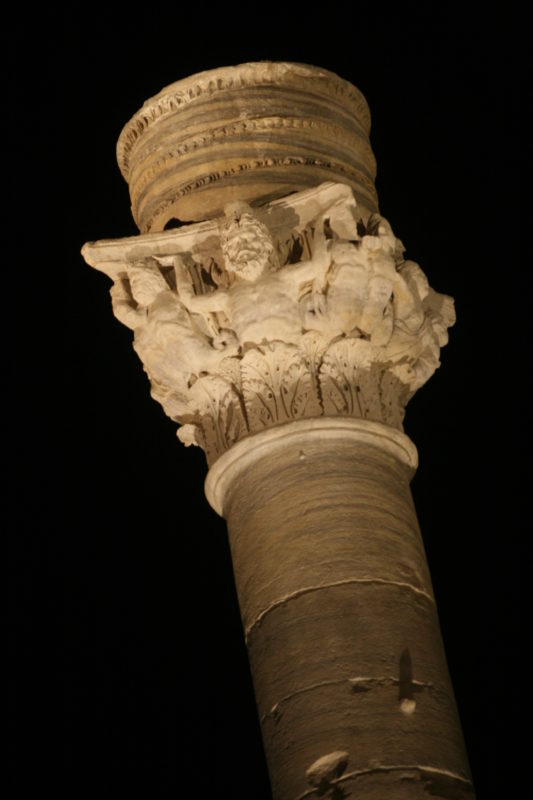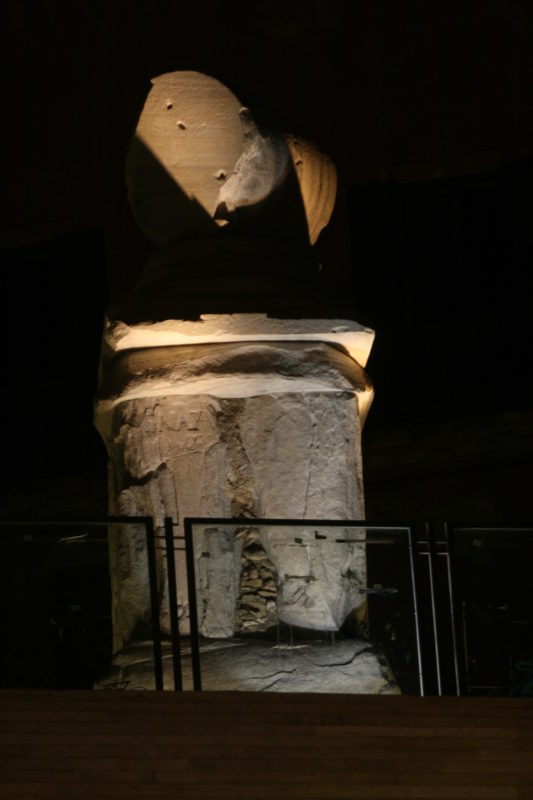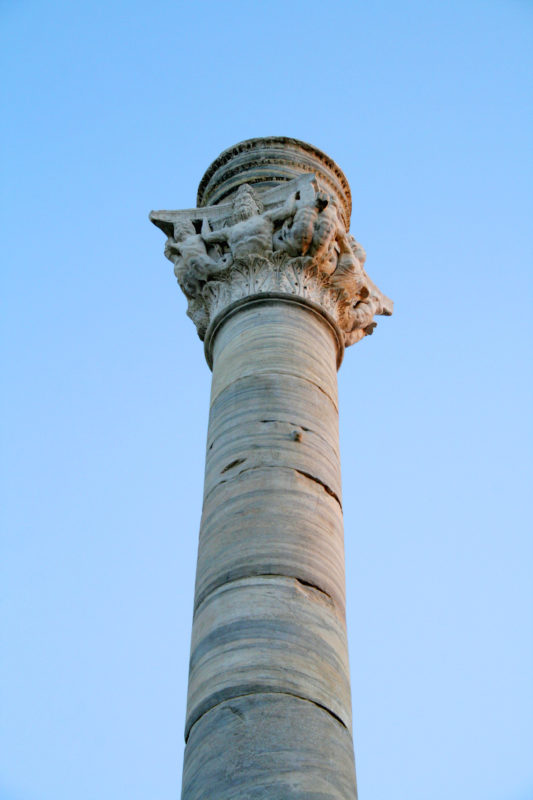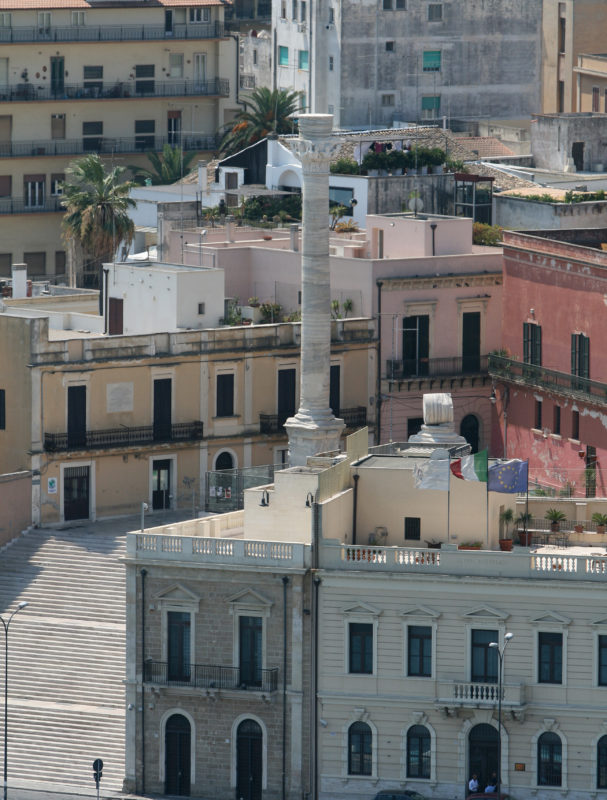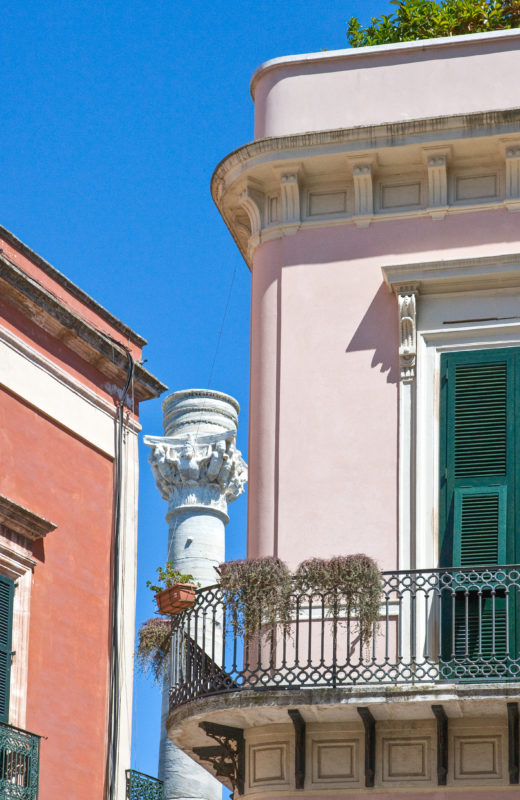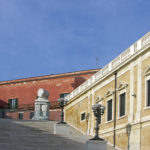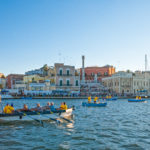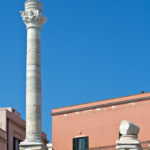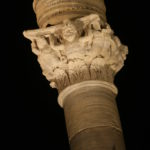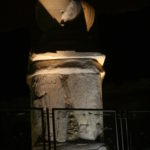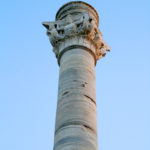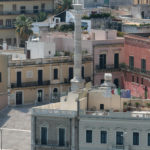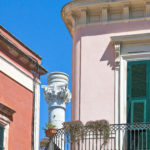The Columns of the port
For long time regarded as the terminal monument of the Appian Way, the Roman Columns were presumably realised around the 2nd and the 3rd century A.D. to celebrate the crucial importance of the port for Roman expansion and commercial traffic.For long time regarded as the terminal monument of the Appian Way, the Roman Columns were presumably realised around the 2nd and the 3rd century A.D. to celebrate the crucial importance of the port for Roman expansion and commercial traffic. Fortunes and progress of the city were identified with the columns which, for this reason, were embodied in its own emblem. In 1528, a static failure caused the collapse of the north-western column, which was later donated to the town of Lecce. Near the survived column, there are remarkable examples of stately buildings of the 17th and 18th century, such as the buildings belonging to the Scolmofora and Perez families, as well as the ruins of a house, currently annexed in a more modern building, which, according to some scholars would have been the house where the great poet Virgil spent the last days of his life.
For long time regarded as the terminal monument of the Appian Way, the Roman Columns were presumably realised around the 2nd and the 3rd century A.D. to celebrate the crucial importance of the port for Roman expansion and commercial traffic. Fortunes and progress of the city were identified with the columns which, for this reason, were embodied in its own emblem. In 1528, a static failure caused the collapse of the north-western column, which was later donated to the town of Lecce. Near the survived column, there are remarkable examples of stately buildings of the 17th and 18th century, such as the buildings belonging to the Scolmofora and Perez families, as well as the ruins of a house, currently annexed in a more modern building, which, according to some scholars would have been the house where the great poet Virgil spent the last days of his life.
For long time regarded as the terminal monument of the Appian Way, the Roman Columns were presumably realised around the 2nd and the 3rd century A.D. to celebrate the crucial importance of the port for Roman expansion and commercial traffic. Fortunes and progress of the city were identified with the columns which, for this reason, were embodied in its own emblem. In 1528, a static failure caused the collapse of the north-western column, which was later donated to the town of Lecce. Near the survived column, there are remarkable examples of stately buildings of the 17th and 18th century, such as the buildings belonging to the Scolmofora and Perez families, as well as the ruins of a house, currently annexed in a more modern building, which, according to some scholars would have been the house where the great poet Virgil spent the last days of his life.
For long time regarded as the terminal monument of the Appian Way, the Roman Columns were presumably realised around the 2nd and the 3rd century A.D. to celebrate the crucial importance of the port for Roman expansion and commercial traffic. Fortunes and progress of the city were identified with the columns which, for this reason, were embodied in its own emblem. In 1528, a static failure caused the collapse of the north-western column, which was later donated to the town of Lecce. Near the survived column, there are remarkable examples of stately buildings of the 17th and 18th century, such as the buildings belonging to the Scolmofora and Perez families, as well as the ruins of a house, currently annexed in a more modern building, which, according to some scholars would have been the house where the great poet Virgil spent the last days of his life.

